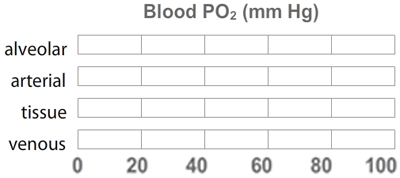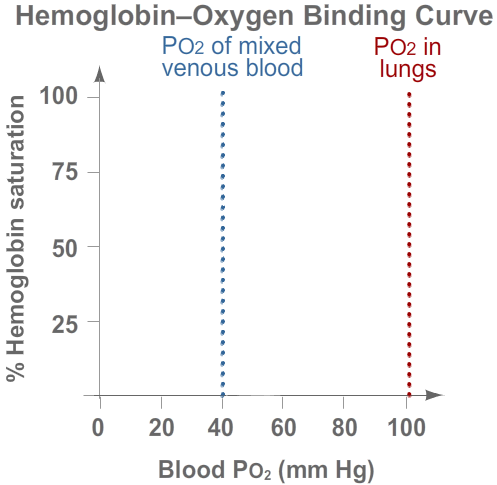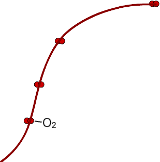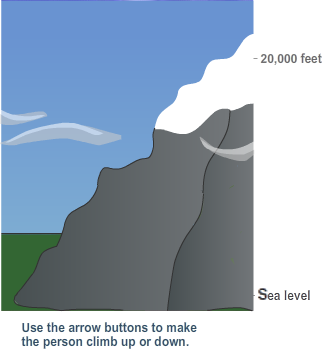At rest, the amount of O2 unloaded from hemoglobin is only about 25%. During exercise, the oxygen demand of the tissues increases, which decreases tissue PO2 by about 15 mm Hg. While this drop is comparatively small, because of positive cooperativity (in which O2 binding by one subunit of a hemoglobin molecule influences the O2 affinity of the other subunits), more oxygen is unloaded. Thus, hemoglobin will unload two of its oxygen molecules instead of the usual one.









Dotted lines indicate the partial pressure of oxygen in tissue or lungs at rest (or at sea level) and the solid lines indicate the PO2 of Tissue or Lungs as it varies with activity or elevation. Blue indicates deoxygenated blood, red indicates oxygenated blood.


Slow
Fast




